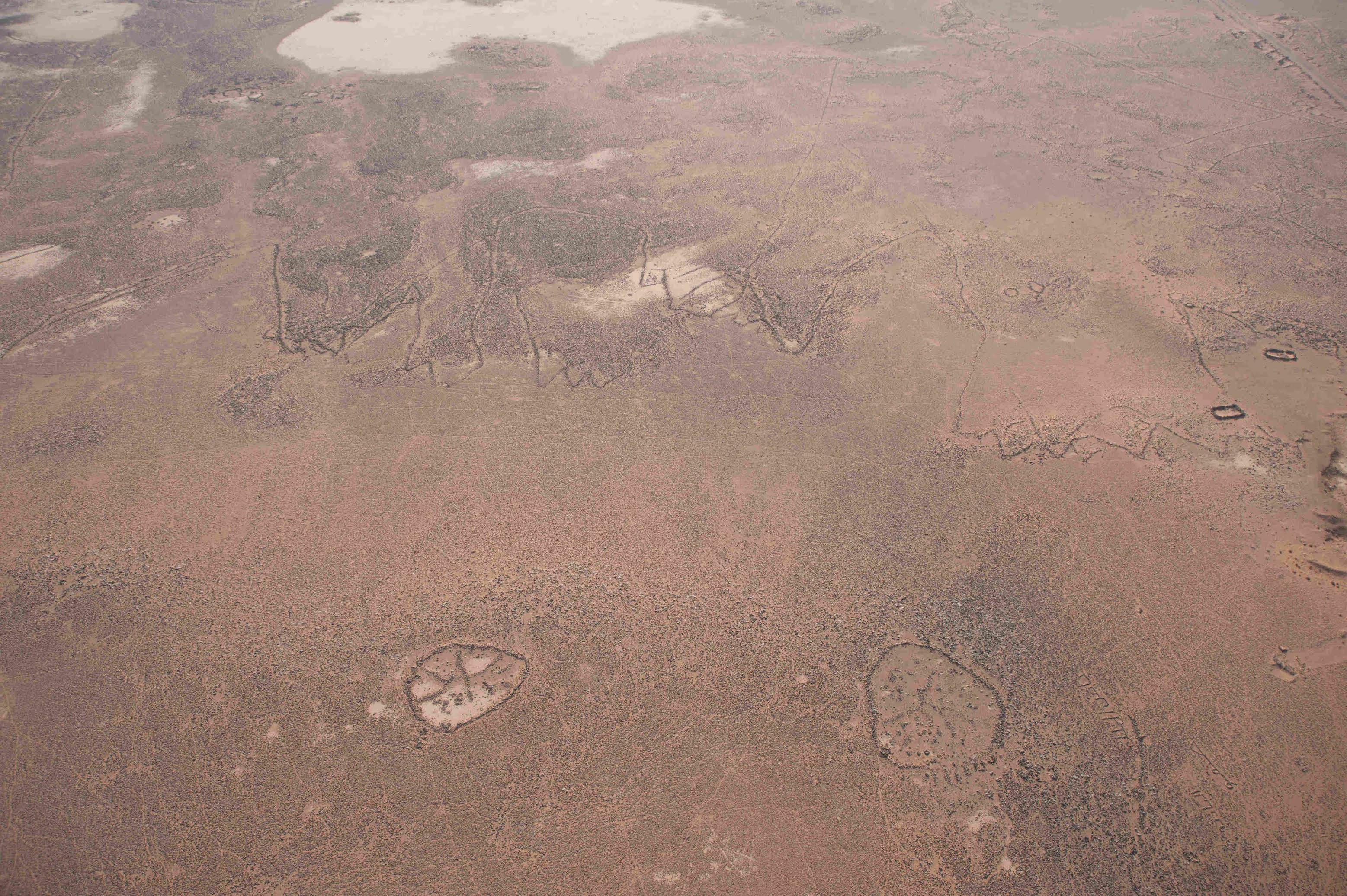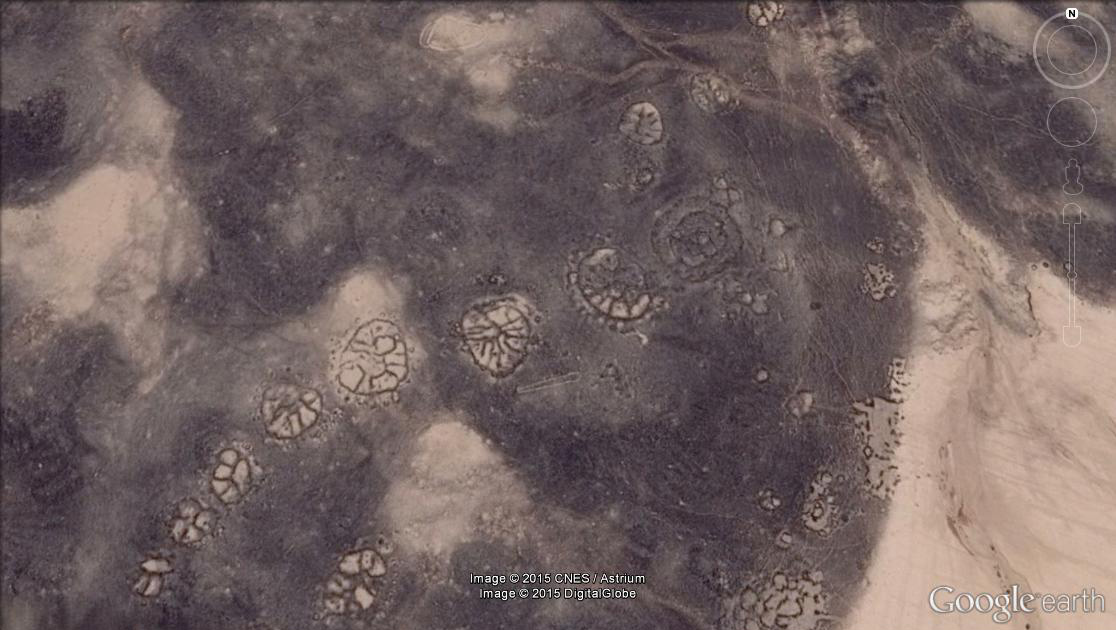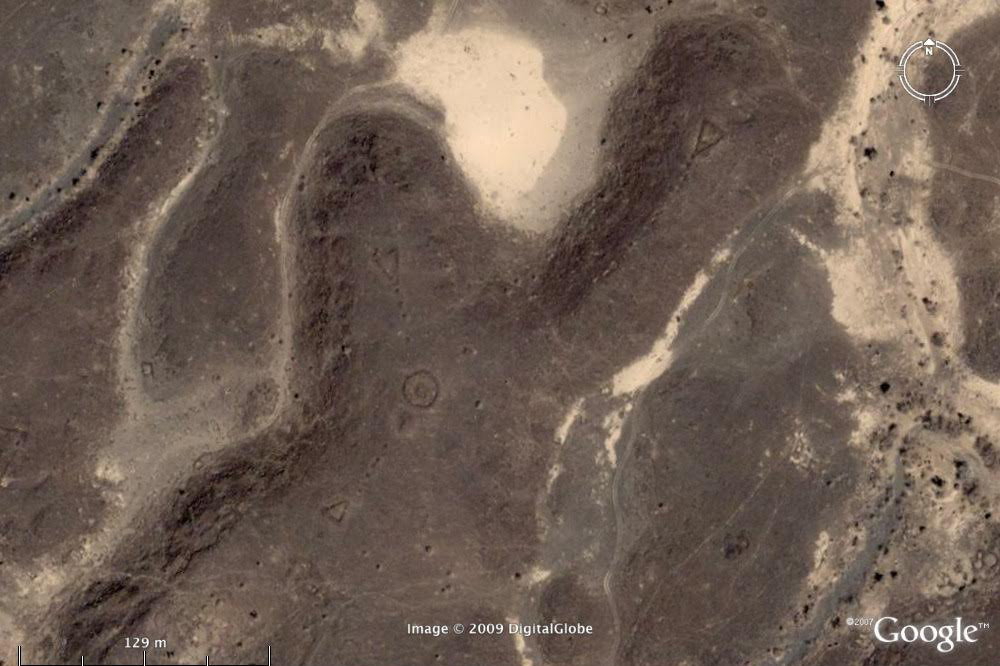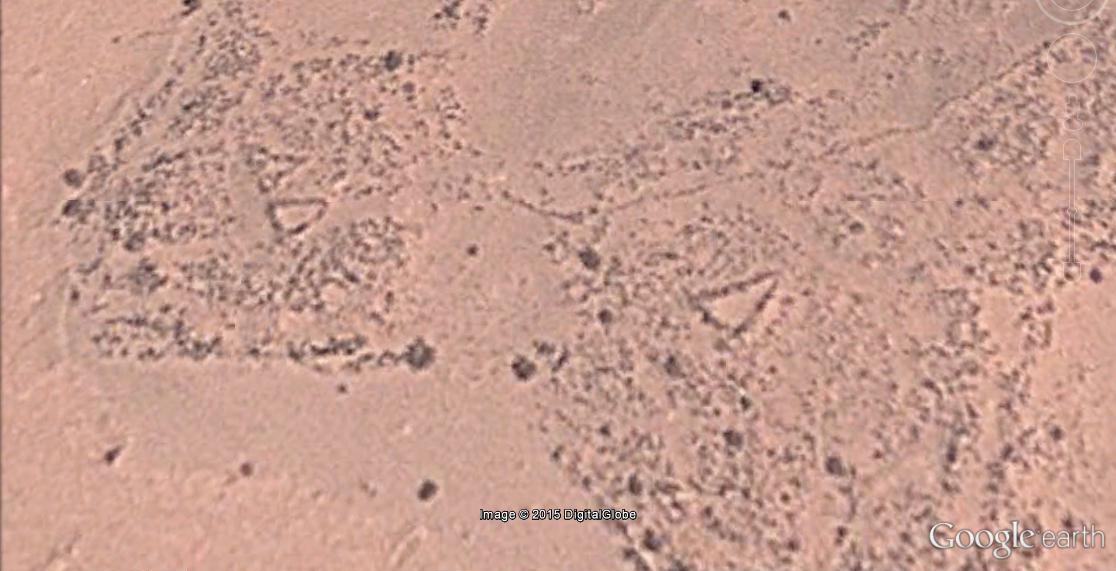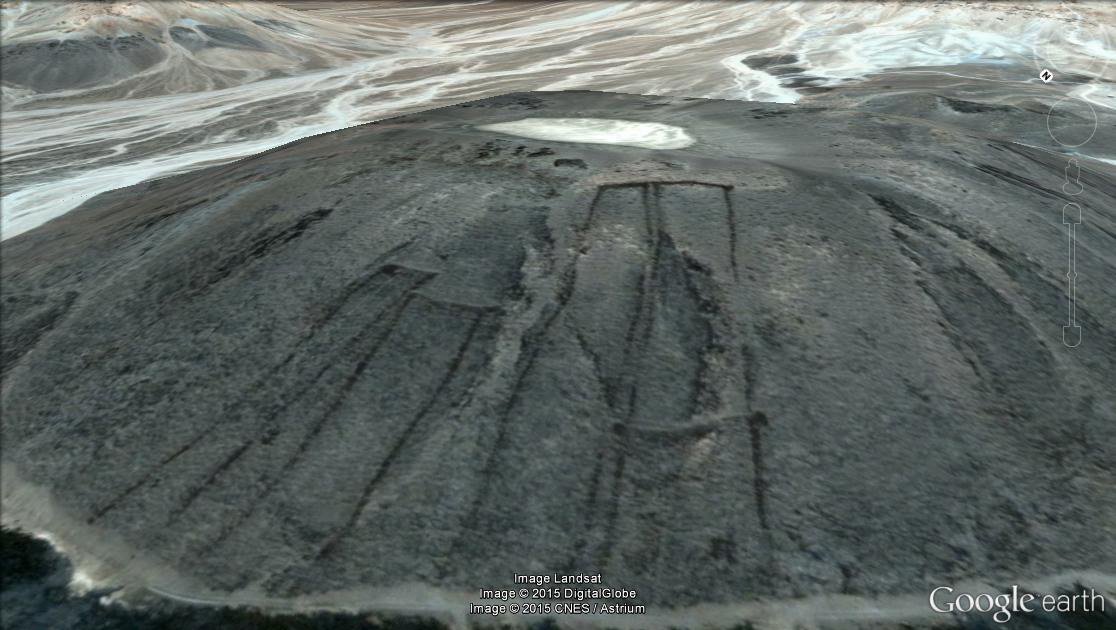In Photos: Sprawling Wheel-Shaped Structures Dot the Middle East
New research sheds light on thousands of stone structures found throughout a wide area of the Middle East. Pilots noticed the structures as early as World War I when, in 1927, RAF Flight Lieutenant Percy Maitland described the structures in a report published in the journal Antiquity. The Bedouin told him that they called the structures the "works of the old men," a name that is still used today by researchers. Much of the new research focuses on one type of structure known as "wheels" — circular stone structures that often have spokes radiating from the center. [Read full story on Middle East Lines]
Works of the old men
The two wheels seen in this image were dated using a technique called optically stimulated luminescence (osl). The dates indicate that both structures were built around 8,500 years ago. The wheels are located in the Black Desert of Jordan at a site called Wadi Wisad. In this photo a massive meandering wall can also be seen in the distance. These walls are also called "works of the old men" and their purpose is unknown. (Photo modified from © Robert Bewley APAAME_20091004_RHB-0108)
Fuzzy view
The appearance of the wheels at Wadi Wisad at ground level. It's difficult to see the patterns of the wheels at ground level although they become clear once you are airborne. (Photo courtesy C.D. Athanassas)
Aligned with the sunrise
The wheels seen here are located in the Azraq Oasis in Jordan. Researchers found that, statistically, the spokes of these wheels have a southeast-northwest orientation that may align with the sunrise during the winter solstice. Other wheels studied do not have this alignment. (Image courtesy Google Earth)
Get the world’s most fascinating discoveries delivered straight to your inbox.
Saudi Arabia bull's-eyes
In Saudi Arabia researchers have discovered "wheels" (if they can be called that) with patterns that are far different than what you see in Jordan. This particular wheel has a bull's-eye design. Three triangular structures are seen pointing to it. Rock piles can be seen extending from the triangles to the bull's-eye. The date and function of this site is unknown. (Image courtesy Google Earth)
Triangles in the desert
Three triangles can be seen in this satellite image. Many triangular structures have been discovered in Saudi Arabia by a team with the Aerial Photographic Archive for Archaeology in the Middle East (APAAME). Scientists don't know how far back the structure date nor do they know what their purpose may have been. (Photo courtesy Google Earth)
Desert gates
Archaeologists also found "works of the old men" that looked like gates from above. To date, they have discovered 332 gates in Saudi Arabia, with no examples of this design found to the north. The gates have two thick walls (or heaps of stone) with one or more connecting walls. This image shows four gates on the side of a volcano known as "Jabal al-Abyad." The purpose and age of the gates are unknown. (Image courtesy Google Earth)
Gates on a volcano
Another gate found on the side of the Jabal al-Abyad volcano. ( Image courtesy Google Earth)
Follow us @livescience, Facebook & Google+.

Owen Jarus is a regular contributor to Live Science who writes about archaeology and humans' past. He has also written for The Independent (UK), The Canadian Press (CP) and The Associated Press (AP), among others. Owen has a bachelor of arts degree from the University of Toronto and a journalism degree from Ryerson University.


